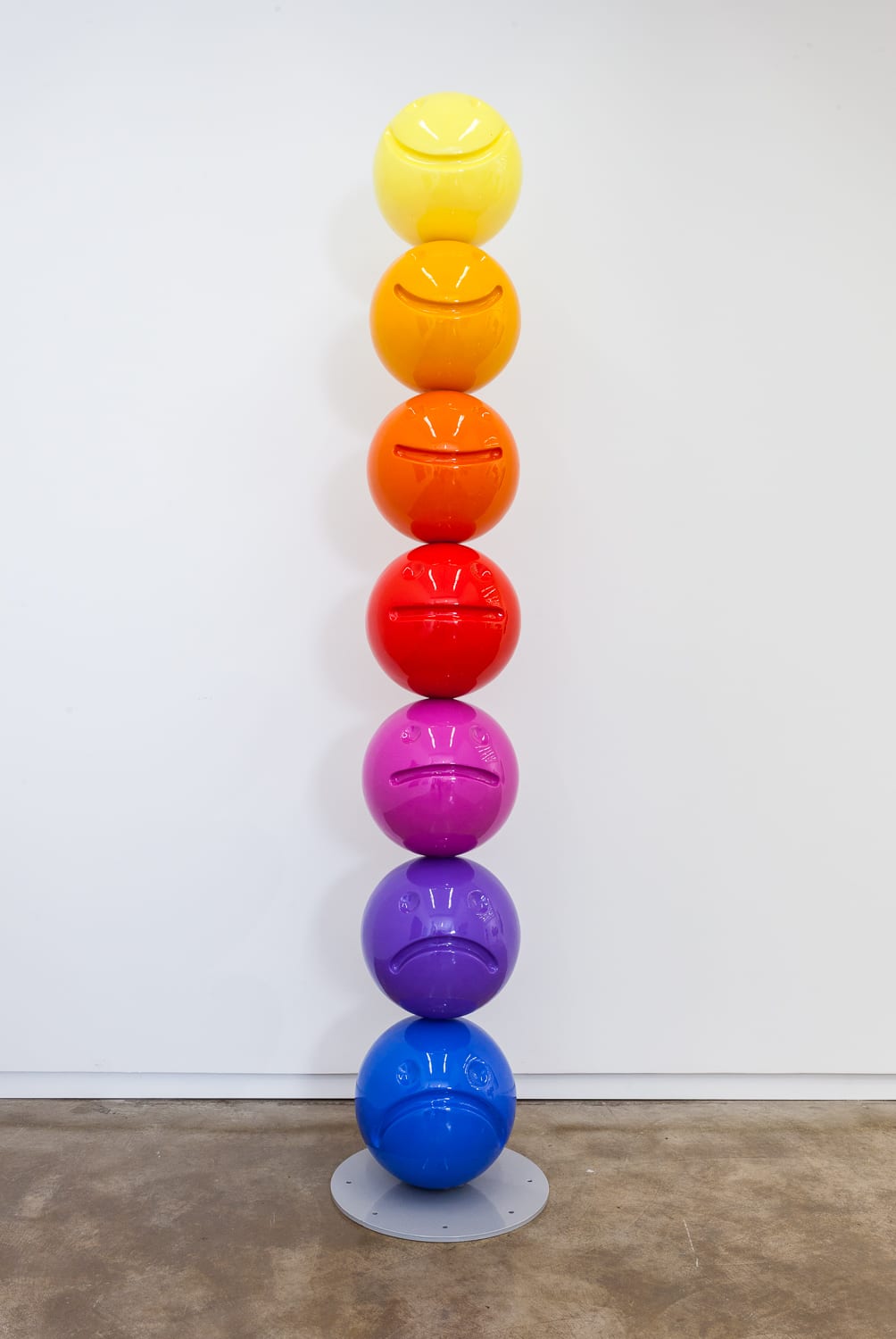Tony Tasset USA, b. 1960
Mood Sculpture, 2017
Fiberglass and paint
126 x 18 x 18 in
320 x 45.7 x 45.7 cm
Indoor / Outdoor
320 x 45.7 x 45.7 cm
Indoor / Outdoor
Edition of 3
6080
Further images
Tony Tasset excels at infusing existential gravitas into instantly recognizable, Pop-like forms. Such iconic Tasset work as his fiberglass Snowmen sculptures, his large-scale fiberglass deer, or his massive, exasperated Paul...
Tony Tasset excels at infusing existential gravitas into instantly recognizable, Pop-like forms. Such iconic Tasset work as his fiberglass Snowmen sculptures, his large-scale fiberglass deer, or his massive, exasperated Paul Bunyan are easily located within the American visual vernacular, and yet their folk presence takes on extra emotional weight in Tasset's heart-felt renderings.
About MOOD SCULPTURE, Tasset says, “I used Constantin Brancusi’s ENDLESS COLUMN as an organizing structure. ENDLESS COLUMN was a monument to the age of mechanical reproduction, an abstraction of the assembly line endlessly repeating the same form. MOOD SCULPTURE is my attempt to make a similar monument to the communication age and with it the study of the mind. I simplified the pain chart to just five emotions and five colors, from the blues at the bottom to the sunny expression on top. A younger generation will think of emoji’s–endless objects and emotions reduced to universally understandable signs. I thought maybe MOOD SCULPTURE could be used as an emotional temperature taker. As a viewer walks by they can check where they rank on any given day, and act accordingly-if they are too close to the bottom it might be time to meditate, exercise or just go back to bed. A University campus seems the perfect location for such a test.”
About MOOD SCULPTURE, Tasset says, “I used Constantin Brancusi’s ENDLESS COLUMN as an organizing structure. ENDLESS COLUMN was a monument to the age of mechanical reproduction, an abstraction of the assembly line endlessly repeating the same form. MOOD SCULPTURE is my attempt to make a similar monument to the communication age and with it the study of the mind. I simplified the pain chart to just five emotions and five colors, from the blues at the bottom to the sunny expression on top. A younger generation will think of emoji’s–endless objects and emotions reduced to universally understandable signs. I thought maybe MOOD SCULPTURE could be used as an emotional temperature taker. As a viewer walks by they can check where they rank on any given day, and act accordingly-if they are too close to the bottom it might be time to meditate, exercise or just go back to bed. A University campus seems the perfect location for such a test.”





